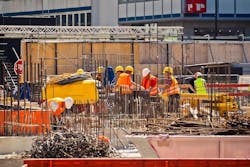Leading economists predict construction industry growth through 2017
Associated Builders and Contractors (ABC) Chief Economist Anirban Basu, American Institute of Architects (AIA) Chief Economist Kermit Baker and National Association of Home Builders (NAHB) Chief Economist Robert Dietz predicted continued growth for the construction industry in 2017 during a joint economic forecast this week (download the PDF slidedeck; watch the archived presentation).
Each economist discussed leading, present, and future indicators for sector performance, including ABC’s Construction Backlog Indicator (CBI), AIA’s latest Architecture Billings Index (ABI) and Construction Consensus Forecast, and the NAHB/Wells Fargo Housing Market Index (HMI).
The economists’ comments can be read below.
Anirban Basu, ABC Chief Economist: "Nonresidential construction spending growth will continue into the next year with an estimated increase in the range of 3 to 4 percent. Growth will continue to be led by privately financed projects, with commercial construction continuing to lead the way. Energy-related construction will become less of a drag in 2017, while public spending will continue to be lackluster."
Robert Dietz, NAHB Chief Economist: "Our forecast shows single-family production expanding by more than 10 percent in 2016, and the robust multifamily sector leveling off. Historically low mortgage interest rates and favorable demographics should keep the housing market moving forward at a gradual pace, but residential construction growth will be constrained by shortages of labor and lots and rising regulatory costs."
Kermit Baker, AIA Chief Economist: "Revenue at architecture firms continues to grow, so prospects for the construction industry remain solid over the next 12 to 18 months. Given current demographic trends, the single-family residential and the institutional building sectors have the greatest potential for further expansion at present."
